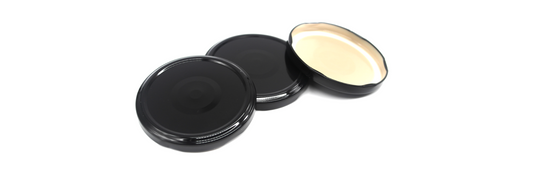Tape, a seemingly simple product, plays an important role in numerous industries. Its performance, largely determined by its strength properties, significantly impacts operational efficiency and product quality. This article delves into the critical factors influencing tape strength, including measurement methodologies and the diverse range of tape types available. By understanding these elements, businesses can make informed decisions to optimize operations and achieve desired outcomes.
- 9 Common Types of Tape That You Should Know
- What is Water Activated Tape (WAT)? How to Use Water Activated Tape Effectively
- What is Self-Adhesive Paper Tape? How Does Self-Adhesive Tape Work?
How is tape strength measured?
Tape strength is a critical property influencing the performance and suitability of adhesive tapes in various applications. Accurate measurement of tape strength is essential for product development, quality control, and effective material selection.
Several standard tests are employed to quantify tape strength:
- Tensile Strength: This measures the force required to break a tape when pulled axially. It is typically expressed in pounds per square inch (psi) or Newtons per square meter (N/m²). Tensile strength is crucial for applications demanding high resistance to tearing or elongation.
- Shear Strength: Shear strength evaluates the resistance of a tape to forces applied parallel to the adhesive surface. It is measured in psi and is critical for applications where the tape is subjected to lateral stress, such as holding objects in place.
- Peel Adhesion: This test determines the force needed to remove a tape from a substrate at a specific angle, often 180 degrees. Peel adhesion is expressed in psi or N/m and is vital for applications requiring strong initial and sustained adhesion.
- Tack: Tack refers to the initial adhesive force of a tape upon contact with a surface. While often assessed qualitatively, specialized equipment can quantify tack for precise evaluation. It is crucial for applications demanding immediate adhesion, such as masking or packaging tapes.
It is important to note that environmental factors such as temperature and humidity can significantly influence tape strength. Additionally, the nature of the substrate to which the tape is applied can affect adhesion properties.
In the next section, explore factors that affect tape strength and the ability of common tapes in market.

Factors affecting tape strength
Numerous factors influence the strength of a tape, impacting its performance in various applications. Understanding these factors is crucial for selecting the appropriate tape for a specific task.
Adhesive Properties
- Adhesive type: The chemical composition of the adhesive significantly impacts its strength. Acrylic, rubber, silicone, and other adhesive types exhibit varying levels of adhesion and cohesion.
- Thickness: Thicker adhesive layers generally provide stronger bonds, but other factors can influence this.
- Tack level: High-tack adhesives offer immediate adhesion but may compromise long-term strength in some cases.
Substrate Properties
- Surface energy: The substrate's surface energy determines the adhesive's ability to wet out and bond effectively. Higher surface energy surfaces generally enhance adhesion.
- Surface roughness: Rough surfaces can increase the mechanical interlocking between the adhesive and substrate, improving bond strength. However, excessive roughness can hinder adhesive wetting.
- Contamination: Dirt, oil, or other contaminants on the substrate can significantly reduce adhesive performance.
Environmental Factors
- Temperature: Temperature affects both the adhesive and the substrate. Extreme temperatures can weaken adhesive bonds.
- Humidity: High humidity can reduce adhesive strength, especially for certain adhesive types.
- Ultraviolet radiation: Exposure to UV light can degrade some adhesives over time, affecting their strength.
Application Factors
- Application pressure: Applying pressure during and after tape application helps to improve adhesion.
- Application time: Adequate time for the adhesive to wet out the surface is essential for optimal bond strength.
- Load and stress: The amount of force exerted on the tape during use significantly impacts its performance.
Overall, tape strength is influenced by a multitude of factors. However, as previously mentioned, adhesive properties are one of the primary determinants of tape strength. So, do the tapes you are currently using have sufficient load-bearing capacity? The following section will provide a detailed explanation.
Common Types of Tape and Their Different Strengths Ability
Polypropylene Tape
Polypropylene tape is a versatile option known for its balance of strength and cost-effectiveness. While its specific strength can vary based on thickness and adhesive type, it generally offers moderate tensile strength and tear resistance.
- Light-duty polypropylene tape: Typically 1.9 mil thick, this tape is suitable for sealing lighter boxes up to 30 lbs. It offers good adhesion and is easy to apply.
- Medium-duty polypropylene tape: Ranging from 2.2 to 2.5 mil, this tape provides increased strength and durability. It can handle packages weighing up to 50 lbs.
- Heavy-duty polypropylene tape: At 2.9 mil or thicker, this tape offers superior strength and is ideal for securing heavier boxes and cartons. It can withstand rough handling and shipping conditions.

PVC Tape
PVC tape is renowned for its exceptional durability and high tensile strength. It is often used in demanding applications requiring robust and reliable sealing.
- General-purpose PVC tape: Typically 2.5 mil thick, this tape offers good adhesion and tear resistance. Suitable for a wide range of packaging needs.
- Heavy-duty PVC tape: Available in thicknesses of 3.0 mil and above, this tape provides superior strength and puncture resistance. Ideal for securing large, heavy-duty packages.
Paper Tape
While generally less strong than polypropylene or PVC, paper tape has gained popularity for its eco-friendliness. Its strength can vary significantly based on the paper type, adhesive, and thickness.
- Regular paper tape (240): Ideal for lighter-weight packages, this option provides a balance of eco-friendliness and affordability. Suitable for sealing boxes up to 30 pounds, it is a popular choice for retail and e-commerce applications where aesthetic appeal is a factor.
- Heavy-duty paper tape (260): For increased strength and security, heavy-duty paper tape is engineered to handle heavier loads. Capable of sealing boxes up to 55 pounds, it offers reliable closure for larger packages. This option is particularly well-suited for shipping applications where durability and product protection are paramount.
While paper tape offers commendable strength properties, factors such as box construction, shipping conditions, and the specific adhesive used can influence its performance.

Overall, these three types of tape offer varying strengths, and businesses must select the one that best suits their products.
Conclusion
Tape strength is crucial for effective packaging and sealing. By understanding factors like adhesive type, substrate, and environmental conditions, businesses can select the right tape for their needs. Polypropylene, PVC, and paper tapes offer varying strength levels to suit different applications. The correct tape choice enhances product protection, reduces shipping damage, and improves overall supply chain efficiency.









